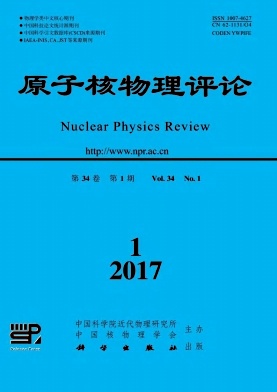|
[1]
|
BASHKANOV M, BARGHOLTZ C, BERIOWSKI M, et al. Phys Rev Lett, 2009, 102: 052301. |
|
[2]
|
ADLARSON P, ADOLPH C. Phys Rev Lett, 2011, 106: 242302. |
|
[3]
|
ADLARSON P,AUGUSTYNIAK W, BARDAN W, et al. Phys Rev Lett, 2014, 112: 202301. |
|
[4]
|
ADLARSON P, AUGUSTYNIAK W, BARDAN W, et al. Phys Rev C, 2014, 90: 035204. |
|
[5]
|
ADLARSON P, AUGUSTYNIAK W, BARDAN W, et al. arXiv: 1606.02964 [nucl-ex] |
|
[6]
|
DYSON F J, XUONG N H. Phys Rev Lett, 1964, 13: 815. |
|
[7]
|
GARCILAZO H, FERNANDEZ F, VALCARCE A, et al. Phys Rev C, 1997, 56: 84. |
|
[8]
|
VALCARCE A, GARCILAZO H, MOTA R D, et al. J Phys G, 2001, 27: L1. |
|
[9]
|
LI Q B, SHEN P N. J Phys G, 2000, 26: 1207. |
|
[10]
|
GAL A, GARCILAZO H. Nucl Phys A, 2014, 928: 73. |
|
[11]
|
ZHANG Z Y, YU Y W, SHEN P N, et al. Nucl Phys A, 1997, 625: 59. |
|
[12]
|
YUAN X Q, ZHANG Z Y, YU Y W, et al. Phys Rev C, 1999, 60: 045203. |
|
[13]
|
LI Q B, SHEN P N. J Phy G, 2000, 26: 1207. |
|
[14]
|
LI Q B, SHEN P N, ZHANG Z Y, et al. Nucl Phys A, 2001, 683: 487. |
|
[15]
|
DAI L R, ZHANG Y N, SUN Y L, et al. Eur Phys J A, 2016, 52: 295. |
|
[16]
|
DAI L R, ZHANG Z Y, YU Y W, et al. Nucl Phys A, 2003, 727: 321. |
|
[17]
|
KUSAINOV A M, NEUDATCHIN V G, OBUKHOVSKY I T, et al. Phys Rev C, 1991, 44: 2343. |
|
[18]
|
BUCHMANN A, HERNÁNDEZ E, YAZAKI K, et al. Phys Lett B, 1991, 269: 35. |
|
[19]
|
HENLEY E M, MILLE G A. Phys Lett B, 1991, 251: 453. |
|
[20]
|
KAMIMURA M. Suppl Prog Theor Phys, 1977, 62: 236. |
|
[21]
|
DAI L R. Chin Phys Lett, 2005, 22: 2204. |
|
[22]
|
DAI L R. Chin Phys Lett, 2010, 27: 061301. |
|
[23]
|
DAI L R. Chin Phys Lett, 2014, 31: 011401. |
|
[24]
|
DUMBRAJS O, KOCH R, PILKUHN H, et al. Nucl PhysB, 1983, 216: 277. |






 甘公网安备 62010202000723号
甘公网安备 62010202000723号 DownLoad:
DownLoad: